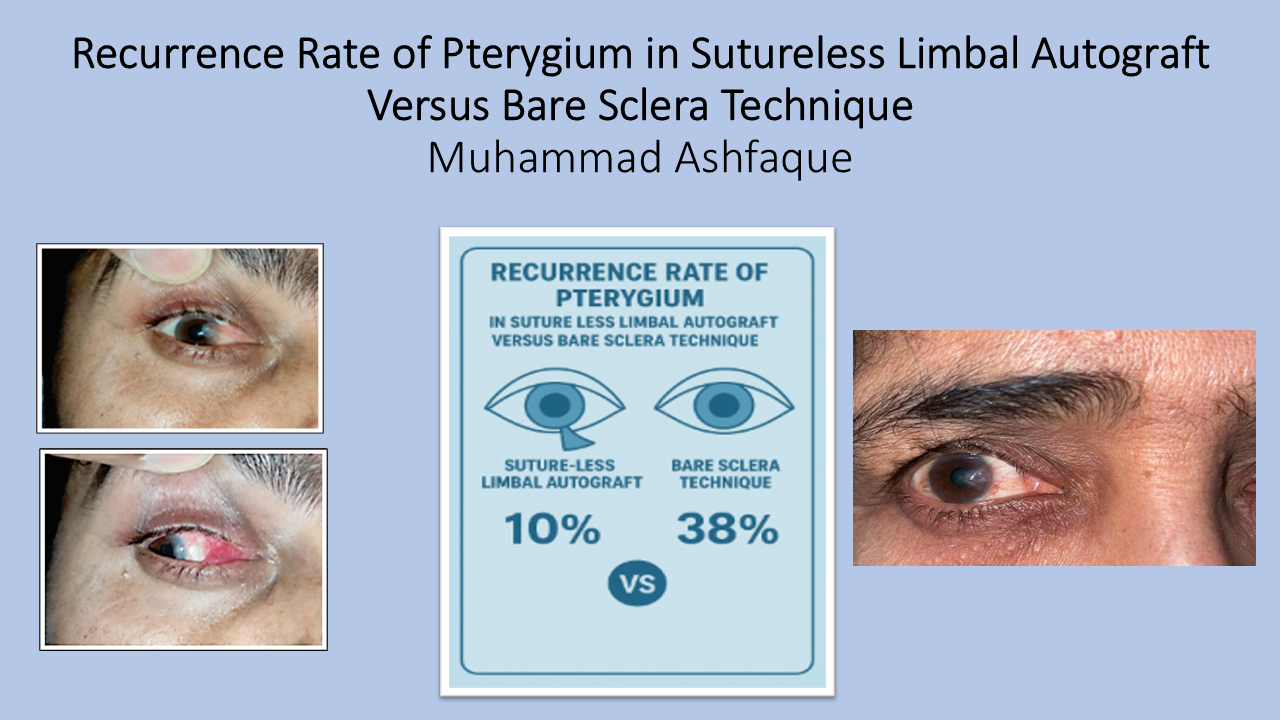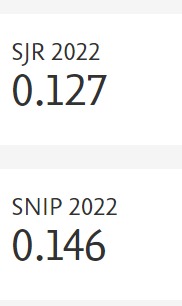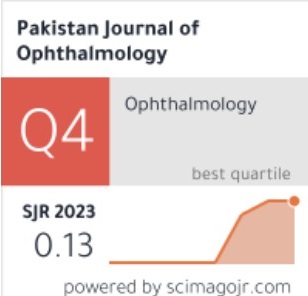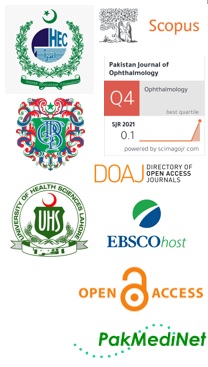Recurrence Rate of Pterygium in Suture Less Limbal Autograft Versus Bare Sclera Technique
Doi: 10.36351/pjo.v41i4.2141
DOI:
https://doi.org/10.36351/pjo.v41i4.2141Abstract
Purpose: To compare the recurrence rate of pterygium in patients undergoing suture-less limbal autograft versus patients undergoing bare sclera surgery.
Study Design: Quasi experimental study.
Place and Duration of Study: Institute of Ophthalmology, Liaquat University of Medical and Health Sciences, Jamshoro, Sindh from March 2021 to March 2022.
Methods: Patients of either sex, aged ≥20 years, with a diagnosis of primary pterygium were included in the study. Participants were allocated into two groups. Group A underwent pterygium excision using the bare sclera technique, whereas Group B received a suture less limbal autograft. Postoperative follow-up was conducted for three months to assess recurrence. Data were collected using a self-designed proforma and analyzed with SPSS version 20. The Chi-square test was applied to compare recurrence rates between the two groups, with a p-value <0.05 considered statistically significant.
Results: The average age of patients in group A was 49.58 ± 12.54 years, while in group B was 45.44 ± 9.67 years. Group A consisted of 17 males (47.2%) and 19 females (52.8%), whereas Group B included 19 males (52.8%) and 17 females (47.2%). At three-month follow-up, pterygium recurrence was observed in 32 cases (88.9%) in group A and in 3 cases (8.3%) of group B(p < 0.05).
Conclusion: The suture-less limbal autograft is statistically and clinically more effective in preventing recurrence than the bare sclera technique.

Downloads
Published
How to Cite
Issue
Section
License
Copyright (c) 2025 Ashok Kumar, 1. Dr Muhammad Ashfaque , 2. Dr Assad Ullah Jatoi, 3. Dr Moona Liza Mahesar, 4. Dr Imtiaz Ahmed Gilal, 5. Dr Noman Ahmed Shaikh, Prof Ashok Kumar Narsani

This work is licensed under a Creative Commons Attribution-NonCommercial 4.0 International License.






